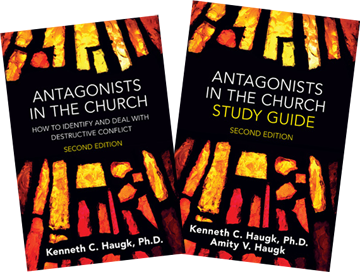“Reading and studying Antagonists in the Church together helps the entire team understand that antagonism is a real problem and that it isn’t something one person can solve alone—it’s about what we can do together.”
Dr. Jerome Brownlee | Overland Park, Kansas
“The real value of this book becomes apparent when you have as many lay leaders as possible study it in a group. The more people in the congregation who read this book, the better.”
Dr. Mark Winkler | Jacksonville, Florida
“When you study this book with other leaders, you build a broad base of understanding and mutual support for dealing with an antagonist.”
Rev. Elaine Cervini | Tulsa, Oklahoma
“For a multi-staff congregation, this book is vital. It’s great for staff training and equipping!”
Rev. Tim Larson | Willmar, Minnesota

